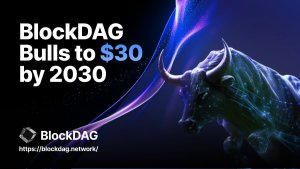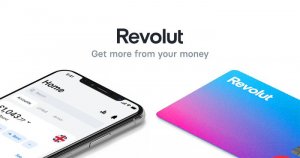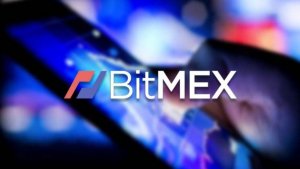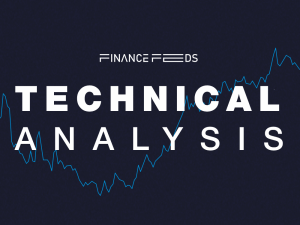CPA and lead conversion are history: The retail brokerage has moved on
In this guest editorial Andrew Saks, Chief Product Officer, TraderEvolution Global highlights the retail brokerage industry’s shift towards quality trading platforms and intuitive apps to attract genuine traders. This approach emphasizes user experience and quality over traditional lead generation and high acquisition costs, aiming for more comprehensive trading environments.

Ever since the dawn of the new era of retail brokerage some twenty years ago in which it became possible for electronic trading companies to be established without any need to develop their own infrastructure, the focus for many such firms has been on marketing and client acquisition.
For many years, the newer entries into the retail electronic brokerage business during the early years of this Millennium viewed the FX and CFD sector as a commercial revenue-generating enterprise and had in some cases come from outside the financial services business from the saturated gambling and affiliate marketing industries.
As a result, the market quickly became populated with companies that had considered the financial services element of the end product to be a vehicle upon which to simply turn leads into funded accounts with greater legitimacy than other affiliate marketing-based enterprises from which they had gained their expertise in lead conversion.
This entry by newcomers into a market previously dominated by well-established electronic trading companies such as IG Group, Interactive Brokers, and CMC Markets, all of which had invested tremendous resources from the outset into developing their own trading infrastructure and operating as finely honed electronic financial services providers, meant that a whole new style of competition appeared. The established companies competed on quality of product range, knowledge and service, whereas the new entrants had no specific USP over each other, therefore their only edge was to attempt to drive down the cost of marketing, client acquisition and retention.
Most FX and CFD industry participants will be very familiar with the seemingly endless array of individuals and ancillary businesses that approach FX brokerages wanting to sell ‘traffic’, or to provide leads.
Rising above the saturated retail market
As the brokerage industry became inundated with hundreds of near-identical start-up brokerages whose range of products, mostly restricted to CFDs and some spot commodities, were all provided on similar terms via similar platforms with a customer experience that was often aimed at giving brokers quick deposits and a transfer of customers from one firm to another whereby familiarity makes this transition easy, there was very little added value to ensure new traders remained engaged past their first deposit and initial six months.
This is where brokers began to concentrate their marketing efforts on initial deposit amount versus the cost of acquiring a new customer, the lifetime value of said customer, and for how much they can buy new leads.
Trading industry conferences were awash with self-starting sales people promising lists of leads, ‘traffic’ and high rates of conversion.
For over a decade, this was prevalent, but suddenly a corner has been turned.
Speaking to brokerage executives over recent months, as well as viewing the dynamics at industry conferences recently, this appears to have become far less prevalent, and a genuine need for developing a product range and user experience which attracts and engages higher quality traders who are genuinely interested in mastering the global capital markets and require a greater value in their interaction with a trading platform than to be simply a statistic on the chart of ‘FTD’s (first time deposits) and the target of retention marketing campaigns whilst the product itself has little substance.
Today, traders want far more, and it shows.
It has been the subject of discussions at recent conferences, as well as a main subject in conversations with executives recently, largely because many brokerages that have risen to prominence and gained a good market share have moved forward and begun to look more closely at what today’s traders really want.
Only by ensuring they are able to engage traders who have a genuine interest in capital markets as well as provide a good quality, comprehensive trading environment via intuitive user interfaces can brokers gain that important edge over competitors.
The newer generation of traders are used to almost every aspect of daily life being accessible from intuitive applications. Everything from supermarket ‘smart shopping’ to managing their daily workflows and tasks are app-based, and that extends to some of the methods by which the younger generation interact with their financial services providers.
Some of the challenger banks as well as cryptocurrency exchanges have developed very user-friendly mobile interfaces which have engaged users very effectively, even if the end product has been lacklustre.
Traders want quality, intuitive platforms rather than to be viewed as ‘prospects’
For example, during the first part of this decade, many people began to trade digital currencies and it became clear that the cryptocurrency sector had got one thing right: The development of very user-friendly, highly engaging in-house exchange platforms.
Perhaps rather than cryptocurrencies being the disruptor of financial markets in the way that was originally anticipated, they have had a greater disrupting effect on the newer generation of traders due to the type of platforms that were used to engage customers of digital asset exchanges. Cryptocurrency gained popularity among extremely tech-savvy people at first, and many of them were very evangelical about it.
High-profile figures such as the Winklevoss twins and Brian Armstrong carried that air of modern tech leadership which resounded among the early adopters who themselves were interested in all matters technological. These, along with their peers in the early part of last decade then started developing simple software web interfaces and matching engines for delivered instruments. They went for adding derivatives only when they were grown enough and had huge budgets, and even then, it was only the biggest players.
When cryptocurrency became less interesting due to its lower volatility, anyone who had entered the world of trading via a crypto app who then decided to trade traditional asset classes such as FX and CFDs would be faced with obsolescence and no differentiation of product ranges or services, no dynamic tools and no brand-specific features.
Quite simply, coming from a late crypto environment to FX or CFD platform represented a severe downgrade in terms of available tools and market data. Only the very most tech-savvy futures and multi-asset brokers could match it.
The futility of paying very high cost per acquisition (CPA) due to ineffective lead buying campaigns and then attempting to maintain new customers who are new to trading and end up losing their initial deposit after a short time is now clear.
Brokerages are moving more toward looking to control their own trading environment in-house by investing in their core trading infrastructure, therefore being able to adapt to market trends as they occur, and just as importantly, to be able to incorporate industry-standard tools within their trading platform interface, such as TradingView, the world’s largest social trading network which is trusted by vast numbers of traders.
Additionally, being able to offer intuitive mobile applications which promote the brand of the brokerage which issues them, and include charting, execution tools, and educational resources to name a few items of value is really important.
Offering the same as everyone else is not enough
Traders these days are those who grew up in the modern era of the smartphone-based lifestyle. It is less effective to have call centers cold-calling numbers from lists of leads purchased from sources which have no claim to the intellectual property of such databases or any method of qualifying the relevance of the potential customers. In short, brokerages are no longer viewing their prospective clients as ‘leads’, but are seeing them as advanced users of the internet, who are likely to demand similar, if not better functionality to that of the challenger banks, crypto exchanges, and retail shopping apps they are accustomed to.
In cases like this, the perpetual zero-sum nature of ‘lead churning’ has a greater effect, in that it is not just the leads – which let’s not forget are human beings who deserve to be treated with dignity as customers of a financial institution – that end up being churned and viewed as a means to a very short end, but eventually the entities themselves.
In addition to working through leads and then buying more, many of those CPA-driven FX/CFD companies that use the same third-party interfaces often keep morphing from one brand to another, and in some cases even changing their country of registration leaving more and more trading communities exploited, resulting in regulatory disdain for CFDs, with front end platforms stigmatised and eventually regulators clamping down on that market.
For the few traders that manage to navigate this and remain in the market, there is a tendency to move on and lead the next waves of incoming newbie traders out of stigmatised asset classes and away from the also-rans which operate in this fashion.
Simply offering the same as others without any investment in creating a high quality, sustainable and adaptable trading environment which promotes your brand and creates loyalty among genuinely engaged traders is now the folly of yesteryear.
Creating these core values internally and building a brokerage which maintains its clients and is able to stay ahead of increasing requirements is vital.
Therefore, the dichotomy between the decrease in interest in churning leads onto also-ran platforms and the increase in offering access to increasing ranges of asset classes via a fully comprehensive and adaptable platform with brokerages in full control has led to a product-focused electronic trading industry rather than a lead-focused one.
Networks of introducing brokers are now far more intrinsic to the process of new client acquisition than they ever were, and the cost of acquiring clients this way is lower than cold digital ad campaigns and lead buying. However, to enable these introducing brokers to bring clients, there needs to be a valuable product range available.
The way of today is very simple – investment in offering a fully comprehensive product range, high platform quality, and having an adaptable range of trader-focused tools and asset classes on one platform with one account is the most effective way to promote a brokerage, as well as foster its notability as a brand.
The original firms who pioneered electronic trading did exactly this and are now huge, publicly listed entities with loyal clients who trade in some cases any asset class on any global market.

It is entirely possible to gain this market presence and quality reputation without having to pour vast resources into it in the way some of those original pioneering firms like Interactive Brokers or IG Group did. Back then, things were very different and those companies often went into the marketplace with a single product offering such as IG Group did with spread betting. Now, we have the exact solution to be able to facilitate this without the time or development costs.
Nowadays it is more important to be able to differentiate away from the also-rans in order to underscore a greater position in the market and create a valuable niche.
During a period in which the retail trading sector has been a developing ground for individuals and entities which are now trading professionally, as we can see in the current influx of proprietary trading companies, using an also-ran platform which does not allow full access to all global markets or facilitate full control by a broker over his business speaks against the professional context of such companies in that marketing as a professional trading business would be a challenge if all that was available to clients is an off-the-shelf retail CFD front end.
At TraderEvolution, we can help your brokerage achieve this and remain ahead of the competition whilst ensuring the engagement of today’s discerning clients.
The subject matter and the content of this article are solely the views of the author. FinanceFeeds does not bear any legal responsibility for the content of this article and they do not reflect the viewpoint of FinanceFeeds or its editorial staff.









